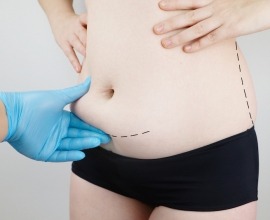Reducing Prominent Ears: Otoplasty 101
- Facial analysis
- How will the ear sit after surgery?
- Aesthetics and procedures
- Psychosocial effects and conclusions
Research reveals that having prominent ears occurs within 5% of Caucasian populations and likely as a result of a dominant trait passed down along generations. The primary factors that contribute to ears developing in this way include either poorly developed antihelical folds or excessive conchal cartilage growth, but these are easily treatable and altered with corrective surgery if you desire it. So, if having such a unique look doesn’t feel right for you or you are acting on behalf of your young child, know that minimally invasive otoplasty techniques or surgery may be utilized as early as 5 years and at any point in adulthood to reshape the ears.[1]
Facial analysis
The ideal distance between the top rim of your ear and the scalp measures between 15-20 mm and at an angle of about 20 degrees but, with prominent ears, which is otherwise known as prominauris, otoplasty is often recommended for those when the angle reaches greater than 30 degrees. To analyze your facial proportions, parallel lines will likely be drawn from the top of your nose across the axis of the ear and your doctor will measure the angle at which your ears sit from the back side of your neck and scalp just around the hairline.[2]
How will the ear sit after surgery?
Think now about a vertical plane drawn down from the center of the face. Your outer earlobe should have about a 15-degree posterior rotation from that vertical plane and, chances are, the length of the ear equals the length of your nose from top to bottom. That means that, after surgery, the topmost cartilage will lie comfortably at the level of your eyebrow while the earlobe sits level to your nostrils.[3]

Aesthetics and procedures
Modern advances in otoplasty include aging as a factor in treatment plans since, with time, cartilage thickens. Suture techniques are therefore an optimal part of treating younger children under 6 years of age, while surgery should be recommended to adults. Newer innovations include incisionless techniques and hydro-dissection for recreation of the antihelical fold, which holds back the outer ridge of the ear. If a surgeon scores one side of cartilage, for example, this can also create a natural looking bow at the point in which other ears would fold. This method in particular has led to the development of more minimally invasive techniques over the past several decades. To address excessive conchal growth, surturing and excisions can be used to reduce the depth of the conchal bowl by decreasing the height of the antihelical fold. Suture-only repair has the benefit of offering precise control but has a higher rate of relapse and need for revision. However, sculpturing is more permanent, less predictable and might deform the shape of the ear. So, best industry practices typically involve a combination of both methods.[4]
Psychosocial effects and conclusions
Otoplasty does indeed bolster self-esteem and provide positive psychosocial benefits even into adulthood. Careful research has reported that aesthetic surgery on protruding ears positively affects self-esteem, even while controlling for the possibility of having additional psychiatric disorders and as long as a patient sees their ears as the sole source of low body image.[5] Therefore, this type of surgery is definitely a good choice for any patient searching for solutions to prominent ear-related psychosocial problems, regardless of age.
Sources:
[1] Felman, Adam. “Otoplasty: Definition, Benefits, and What to Expect.” Edited by Catherine Hannan, Medical News Today, MediLexicon International, 10 Aug. 2020, www.medicalnewstoday.com/articles/246767.
[2] Kennedy, Kenneth L., and Ziad Katrib. “Otoplasty.” StatPearls, National Center for Biotechnology Information, U.S. National Library of Medicine, Jan. 2020, www.ncbi.nlm.nih.gov/books/NBK538320/.
[3] Ibid.
[4] Ordon, Andrew, et al. “Aesthetic Otoplasty: Principles, Techniques and an Integrated Approach to Patient-Centric Outcomes.” Aesthetic Plastic Surgery, vol. 43, 9 July 2019, pp. 1214–1225., doi:https://doi.org/10.1007/s00266-019-01441-2.
[5] Sirin, Seher, et al. “Psychosocial Effects of Otoplasty in Adult Patients: a Prospective Cohort Study.” European Archives of Oto-Rhino-Laryngology, vol. 276, 18 Mar. 2019, pp. 1533–1539., doi:https://doi.org/10.1007/s00405-019-05391-y.














